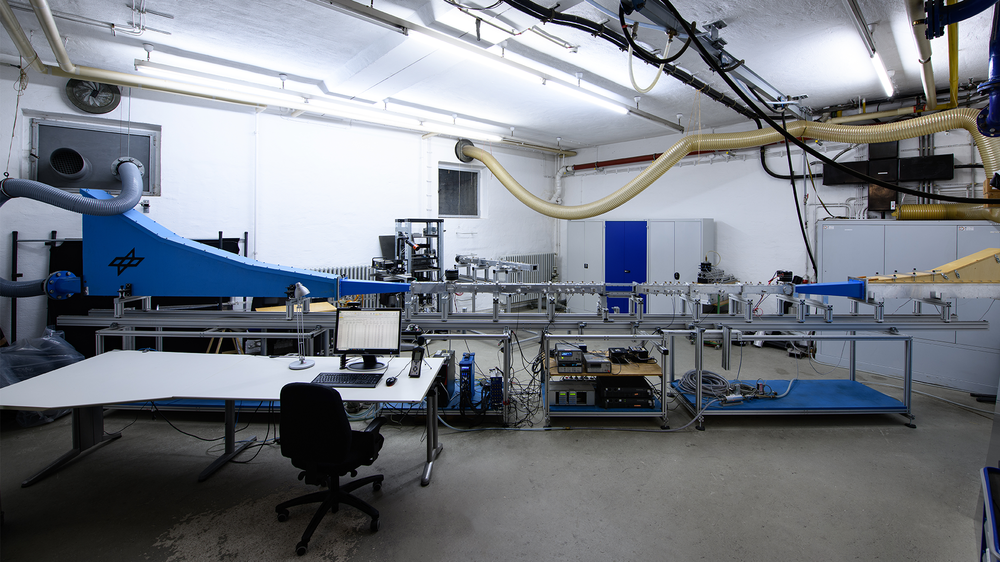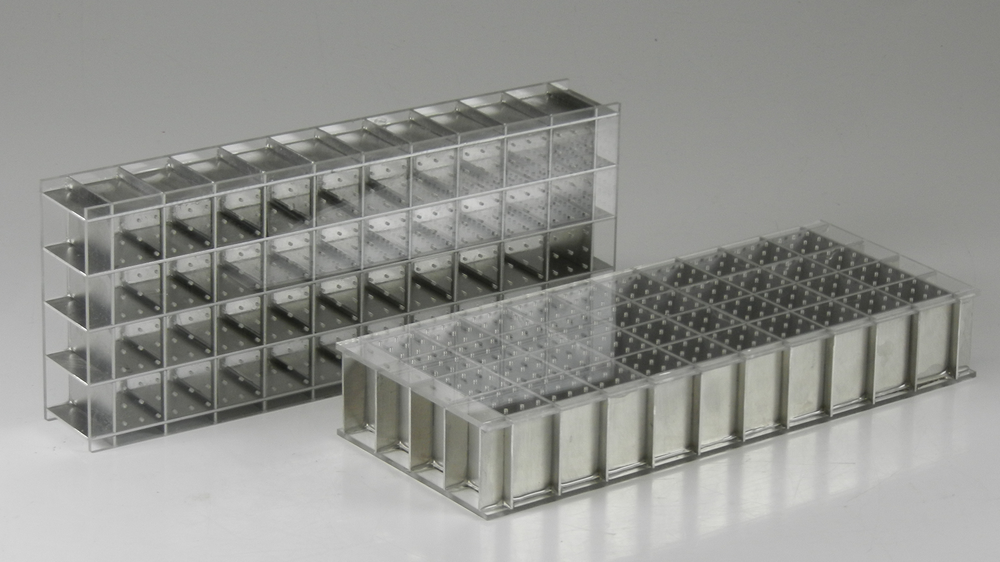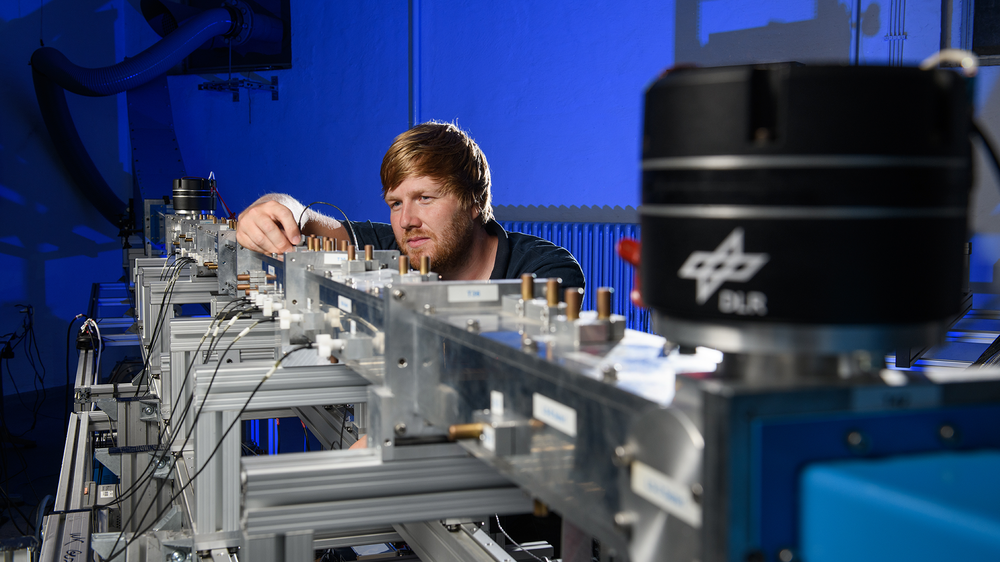The Duct acoustic test rig (DUCT) is an extremely modular and versatile flow channel designed for acoustic measurements. At the test bench, we examine special silencer structures known as liners. These are used in aircraft engines at the inlet and in the bypass duct, among other locations. As the air flows over the sound-absorbing surface, the sound waves are dampened by resonance effects or other absorbers.
The focus here is on providing validation data that can be compared with models and numerical simulations. Loudspeakers at both ends of the channel allow sound propagation to be investigated with and against the main flow. If required, more than 100 microphones can be installed in the channel. Optical access and probe-based measurement techniques also allow for detailed investigations directly on the liners' surfaces, providing a better understanding of the physical processes and enabling the optimisation of prediction and calculation methods.



Characteristics
- TRL 2-4
- Modular flow channel with good accessibility, loudspeakers and low-reflection terminations upstream and downstream of the measuring section
- Installation option for >100 microphones for investigating plane acoustic waves and higher modes
- Measurement conditions: ambient pressure and temperature, flow measurement with hot wire and pneumatic probes
- High accuracy for acoustic assessments
Research topics
- Determination of scattering coefficients for acoustic liners: resonator, bias flow, porous materials
- Impedance determination (various methods)
- Investigation of resonance phenomena in overflowing openings and corresponding mitigation measures
- Fundamental research into the mode of action of liners and measurement technology development, for example acoustic Particle Image Velocimetry (PIV)
Technical specifications
DUCT-C |
DUCT-R | |
|---|---|---|
Test section cross-section | Ø 140 mm | 80 mm x 60 mm |
Mach number | ≤ 0.1 | ≤ 0.3 |
Acoustic cut-off frequency (plane waves) | 1400 Hz | 2100 Hz |
Blow-in/bias flow | yes | yes |
Visual accessibility | no | yes |

